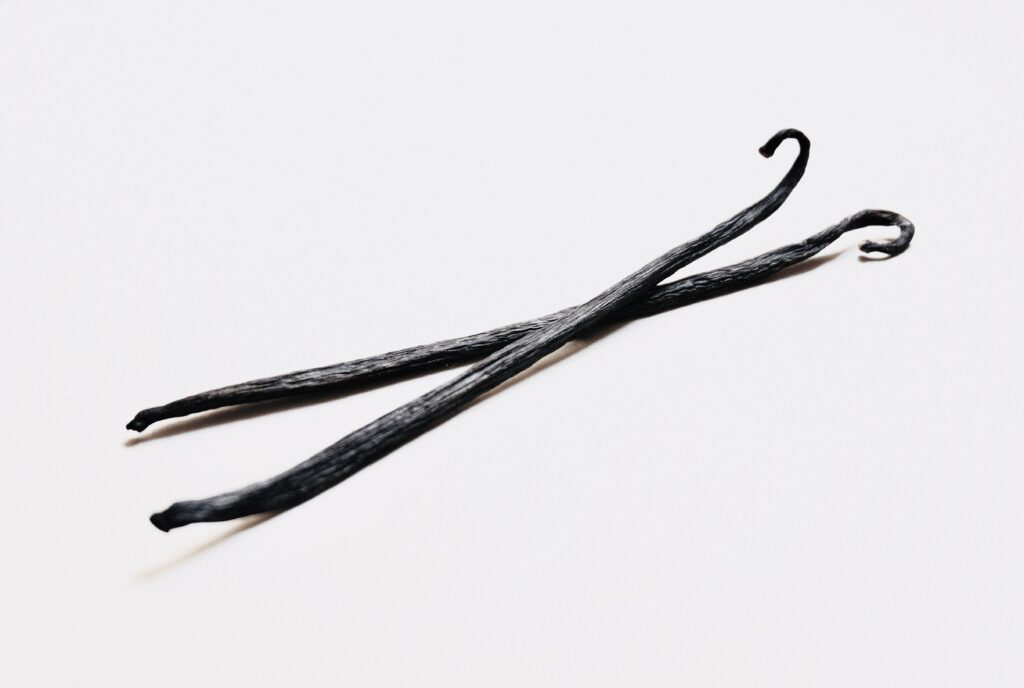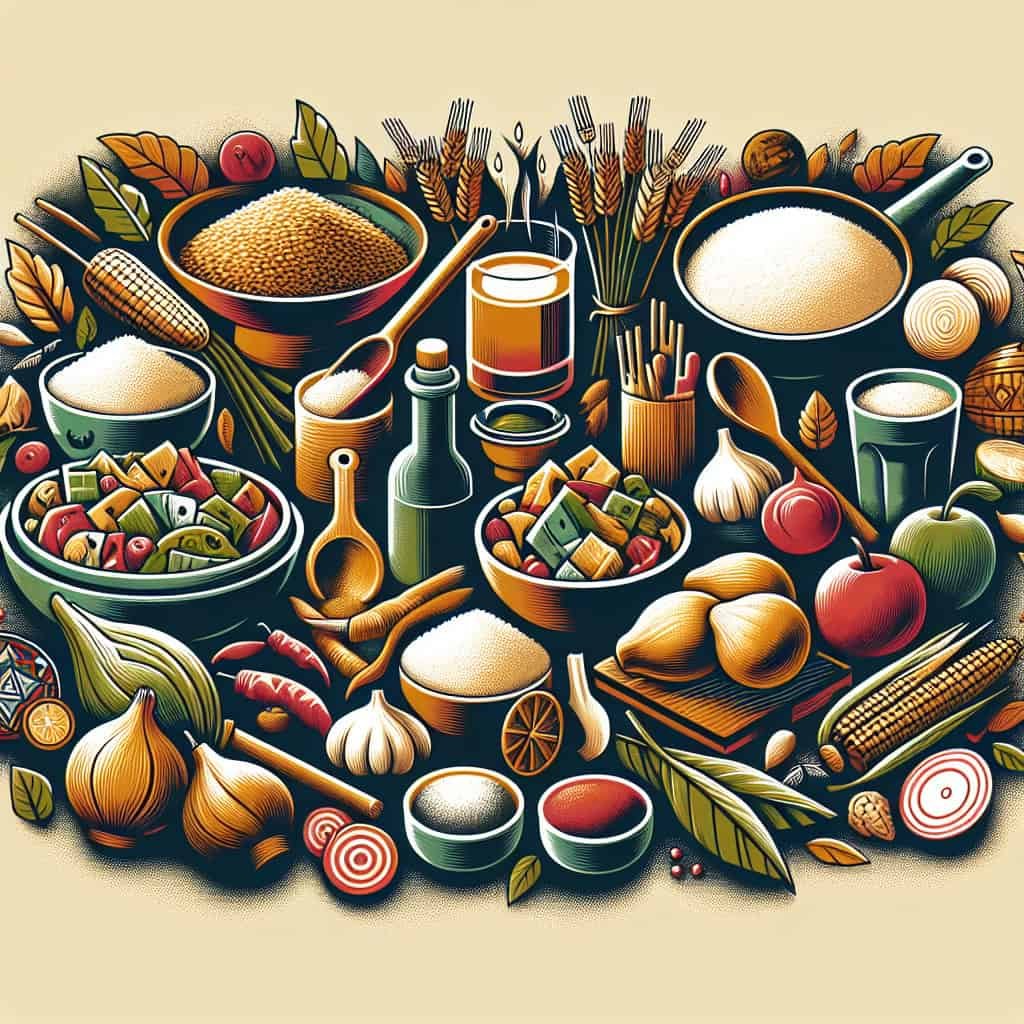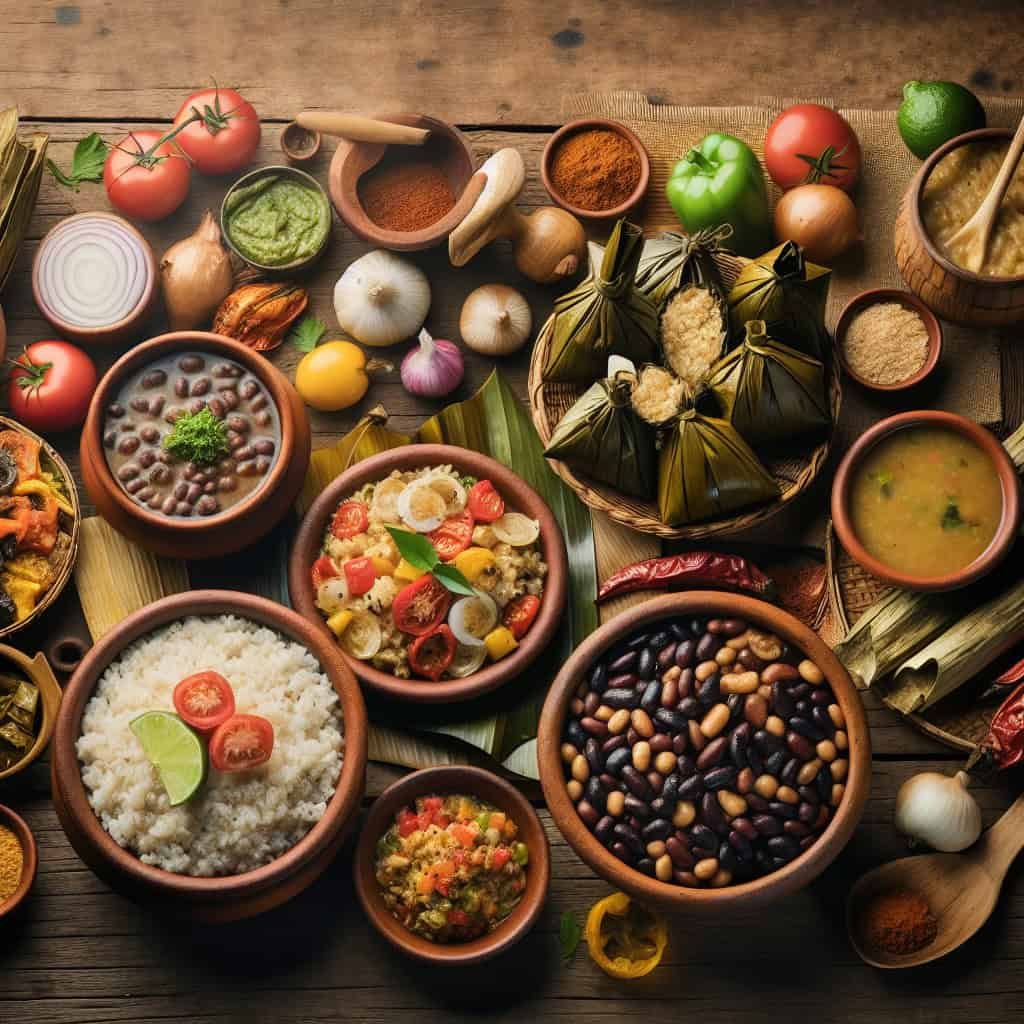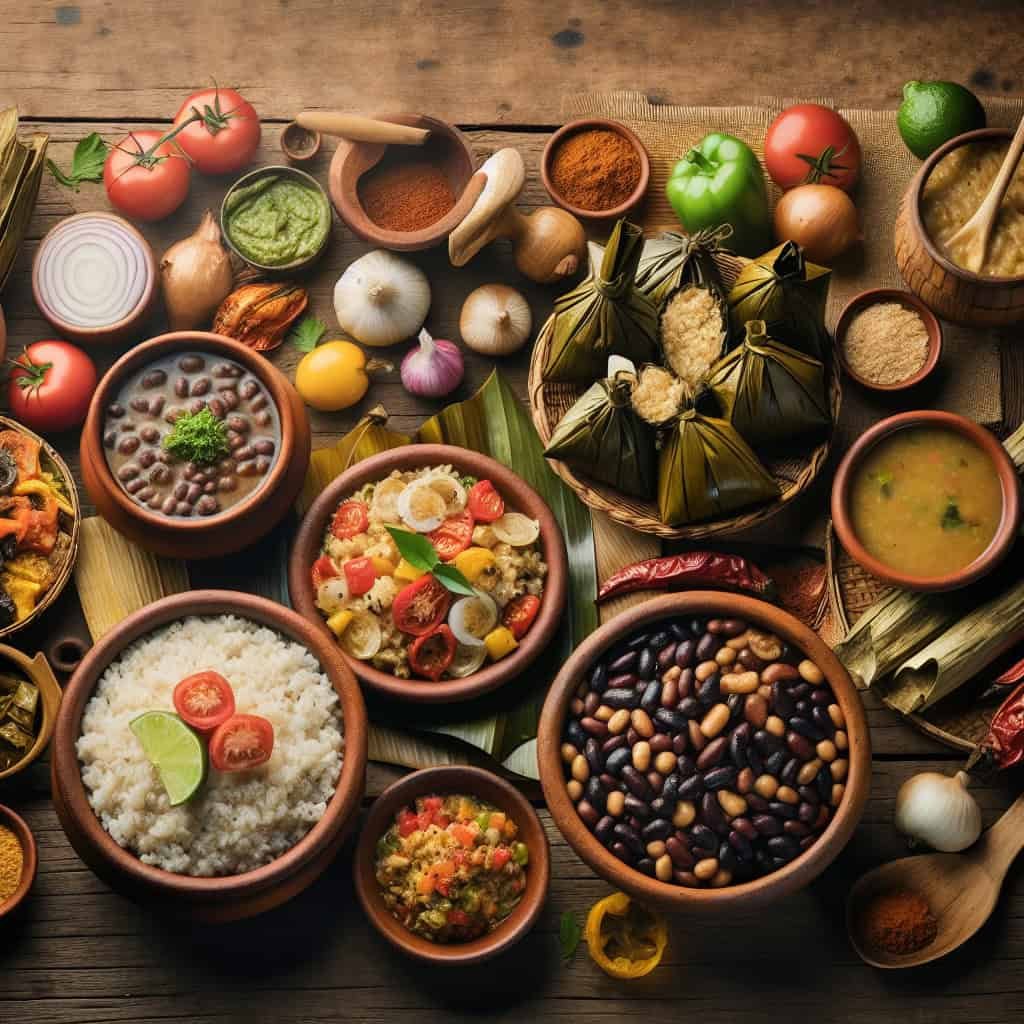Have you ever wondered about the fascinating history and cultural significance behind the delectable dishes of Nicaragua? From the hearty gallo pinto to the mouthwatering vigorón, each dish tells a unique story about the country’s rich heritage and diverse influences. So, buckle up for a flavorsome journey as we explore the captivating tales behind these traditional Nicaraguan delicacies.

History of Nicaraguan cuisine
Nicaraguan cuisine is a beautiful blend of indigenous, Spanish colonial, African, and Caribbean influences. The history of Nicaraguan cuisine can be traced back to the Pre-Columbian era, when the indigenous tribes relied on agriculture, hunting, and fishing for sustenance.
Pre-Columbian era
In the Pre-Columbian era, the indigenous tribes of Nicaragua cultivated crops such as maize, beans, squash, and cocoa. These crops formed the basis of their diet and are still essential components of traditional Nicaraguan dishes today. The indigenous tribes also used unique cooking techniques such as grilling, boiling, and steaming.
Colonial influences
Nicaragua, like many other Latin American countries, was colonized by the Spanish in the 16th century. The Spanish brought with them ingredients such as rice, wheat, onions, and garlic, as well as culinary techniques like frying and braising. These influences forever changed the gastronomic landscape of Nicaragua, creating a fusion of indigenous and Spanish flavors.
Post-independence period
After gaining independence from Spain in 1821, Nicaragua experienced a period of political and social changes that also impacted its cuisine. During this time, Nicaraguan cuisine started to embrace influences from other cultures, such as African and Caribbean traditions. The blending of diverse culinary practices resulted in unique dishes that are now considered staples of Nicaraguan cuisine.
Modern developments
In recent years, there has been a resurgence of interest in traditional Nicaraguan cuisine. Chefs and food enthusiasts are rediscovering traditional recipes and techniques, and incorporating them into modern interpretations. This has given rise to innovative dishes that preserve the essence of Nicaraguan cuisine while adding a contemporary touch.
Traditional Nicaraguan dishes
Nicaraguan cuisine is known for its vibrant flavors and rich, hearty dishes. Here are some of the most iconic traditional Nicaraguan dishes:
Gallo pinto
Gallo pinto is a staple dish in Nicaragua, enjoyed as a breakfast or side dish. It consists of rice and beans cooked together, seasoned with onions, garlic, sweet peppers, and sometimes a touch of cilantro. Gallo pinto is often served with a side of eggs, cheese, and fried plantains.
Nacatamal
Nacatamal is a traditional Nicaraguan tamale that is typically enjoyed on weekends or special occasions. It is made with masa (corn dough) filled with seasoned pork, rice, potatoes, tomatoes, onions, and sometimes olives and raisins. The mixture is wrapped in banana leaves and steamed to perfection.
Indio viejo
Indio viejo is a hearty stew made with cornmeal, meat (usually beef or chicken), tomatoes, onions, sweet peppers, and a variety of spices. The cornmeal gives the dish a thick consistency, similar to a porridge, and the flavors of the meat and spices combine to create a rich and comforting meal.
Vigorón
Vigorón is a popular street food dish that originated in the city of Granada. It consists of boiled yuca (cassava) topped with pickled cabbage and chicharrón (deep-fried pork belly). The combination of the tender yuca, tangy cabbage, and crispy chicharrón creates a delightful mix of textures and flavors.
Chicharrón
Chicharrón is a beloved dish in Nicaragua, enjoyed as a snack or as part of a larger meal. It is made by frying pork belly until it becomes crispy and golden. Chicharrón is often seasoned with salt and served with slices of lime, cabbage salad, and tortillas.
Quesillo
Quesillo is a traditional Nicaraguan cheese snack that is a hit among locals and visitors alike. It consists of a tortilla filled with melted cheese, pickled onions, and a drizzle of sour cream. Quesillo is simple yet incredibly delicious, and it is often enjoyed as a quick and satisfying snack.
Baho
Baho is a Nicaraguan dish that originated in the Chontales region. It is a meat stew made with beef or pork, cooked alongside plantains, yuca, and sometimes corn. The ingredients are layered in a pot and slow-cooked until they become tender and flavorful. Baho is typically served with cabbage salad and tortillas.
Sopa de mondongo
Sopa de mondongo is a traditional Nicaraguan soup made with tripe (cow stomach) as the main ingredient. The tripe is cooked until tender, then combined with vegetables such as carrots, cabbage, onions, and potatoes. Sopa de mondongo is a hearty and nourishing dish that is enjoyed throughout Nicaragua.
Pinolillo
Pinolillo is a traditional Nicaraguan beverage made from ground corn, cacao, and spices. It is often served hot or cold, and it is a popular choice for breakfast or as a refreshing drink on a hot day. Pinolillo is known for its rich and unique flavor, and it is deeply rooted in Nicaraguan culture and traditions.
Nica-style ceviche
Nicaraguan ceviche, also known as Nica-style ceviche, is a dish made with fresh seafood, lime juice, onions, tomatoes, sweet peppers, and cilantro. It is typically served with tostadas or crackers. The acidity of the lime juice “cooks” the seafood, resulting in a tangy and refreshing dish that is perfect for a hot day.
Regional variations in Nicaraguan cuisine
Nicaragua is a country with diverse regional cuisines, each offering unique flavors and dishes. Here are some of the regional variations in Nicaraguan cuisine:
Pacific coast cuisine
The Pacific coast of Nicaragua is known for its abundant seafood and vibrant flavors. It is a region where ceviche, fried fish, and coconut-based dishes are highly popular. The use of aromatic herbs and spices, such as garlic, onion, and cilantro, is prevalent in Pacific coast cuisine.
Caribbean coast cuisine
The Caribbean coast of Nicaragua is influenced by Afro-Caribbean culinary traditions. The cuisine in this region features dishes such as rondón, a hearty seafood stew, and coconut rice. The flavors are bold and spicy, with the use of ingredients like scotch bonnet peppers, allspice, and ginger.
Central region cuisine
The central region of Nicaragua is known for its comfort food and traditional dishes. This is where you will find iconic dishes like gallo pinto, nacatamal, indio viejo, and vigorón. The cuisine in this region is hearty and flavorful, with a focus on using local ingredients.
Indigenous influences
Throughout Nicaragua, indigenous influences can be seen in the cuisine. Ingredients such as corn, beans, and plantains, which were staples of the indigenous diet, are still widely used today. Indigenous cooking techniques, such as grilling and steaming, are also incorporated into traditional Nicaraguan dishes.
Food symbolism in Nicaraguan culture
Food holds a significant place in Nicaraguan culture and is often symbolic of various aspects of life. Here are some examples of food symbolism in Nicaraguan culture:
Corn as a staple
Corn is considered the “soul of Nicaraguan cuisine” and holds deep cultural significance. It symbolizes fertility, sustenance, and the strong connection between the Nicaraguan people and the land. Corn is used in a variety of ways in Nicaraguan cuisine, such as in tortillas, tamales, and beverages like pinolillo.
Plantain and banana symbolism
Plantains and bananas are widely grown and consumed in Nicaragua. They symbolize abundance, prosperity, and hospitality. Plantains are used in many traditional dishes, such as tostones (fried plantains), maduros (sweet ripe plantains), and as a side dish in meals.
Meat and protein symbolism
Meat, especially pork, is valued for its richness and is often associated with celebrations and special occasions. It symbolizes abundance, prosperity, and the coming together of family and friends. Protein-rich dishes like nacatamal and baho are often reserved for festive gatherings.
Coffee and its cultural role
Coffee is an integral part of Nicaraguan culture and holds both economic and cultural significance. Nicaragua is known for its high-quality coffee beans, which are meticulously grown, harvested, and roasted. Coffee is not only a source of livelihood for many Nicaraguan farmers but also a symbol of warmth, hospitality, and socializing.

Influences on Nicaraguan cuisine
Nicaraguan cuisine has been shaped by various influences throughout history. Here are some of the key influences on Nicaraguan cuisine:
Indigenous influences
The indigenous tribes of Nicaragua had a profound impact on the cuisine of the region. They introduced ingredients such as maize, beans, and squash, which formed the foundation of Nicaraguan cooking. Indigenous cooking techniques and traditions are still evident in many dishes today.
Colonial Spanish influences
The Spanish colonization introduced new ingredients, cooking techniques, and flavors to Nicaraguan cuisine. Ingredients such as rice, wheat, onions, and garlic became part of the culinary landscape. Spanish cooking methods such as frying and braising also became popular. Nicaraguan cuisine is a beautiful fusion of indigenous and Spanish flavors.
African influences
African influences are particularly prominent in the Caribbean coast cuisine of Nicaragua. During the colonial era, African slaves brought with them their culinary traditions, including the use of aromatic spices and cooking techniques. Afro-Caribbean dishes like rondón and coconut rice showcase the vibrant flavors and bold spices of African cuisine.
Caribbean influences
Nicaragua shares a coastline with the Caribbean Sea, which has resulted in the incorporation of Caribbean flavors and ingredients into Nicaraguan cuisine. Dishes like rondón, which originated in the Caribbean islands, have become an integral part of Nicaraguan coastal cuisine. The use of coconut, tropical fruits, and spicy flavors is a reflection of the Caribbean influence.
Indigenous and immigrant traditions
The fusion of various culinary traditions brought by settlers and immigrants from different regions has significantly influenced Nicaraguan cuisine. Over the years, traditions from Europe, Africa, and the Caribbean have intertwined with indigenous practices, resulting in a flavorful and diverse cuisine that represents the cultural mosaic of Nicaragua.
Social and cultural aspects of Nicaraguan food
Food plays a central role in Nicaraguan social and cultural life. Here are some social and cultural aspects associated with Nicaraguan food:
Importance of family meals
In Nicaraguan culture, family meals are highly valued and cherished. It is common for extended families to gather for meals, especially during special occasions and celebrations. Family meals are seen as an opportunity for connection, bonding, and sharing stories and experiences.
Food as a reflection of social status
Food can symbolize social status in Nicaraguan culture. Traditional dishes like nacatamal and baho, which require time and effort to prepare, are often associated with special occasions and can convey a sense of wealth and social standing. The ability to provide abundant and flavorful meals is seen as a source of pride.
Food rituals and traditions
Nicaraguan cuisine is steeped in rituals and traditions, especially during holidays and festivities. For example, preparing nacatamales during Christmas is a cherished tradition that brings families together. The process of making the tamales is often a group effort, with different family members taking on specific roles.
Celebratory and festive dishes
Nicaraguan cuisine features a range of celebratory and festive dishes that are reserved for special occasions. These dishes, like baho and indio viejo, often require time and effort to prepare, making them a testament to the importance of celebrations and shared meals in Nicaraguan culture.

Popular Nicaraguan street food
Nicaraguan street food is a vibrant and flavorful part of the culinary scene. Here are some popular Nicaraguan street food dishes:
Vigorón
Vigorón is a beloved street food dish that originated in the city of Granada. It consists of boiled yuca (cassava) topped with pickled cabbage and chicharrón (deep-fried pork belly). The combination of textures and flavors creates a delicious and satisfying street food experience.
Quesillo
Quesillo is a quintessential Nicaraguan street snack. It is made by wrapping a tortilla around melted cheese, pickled onions, and a touch of sour cream. Quesillo is a portable and convenient snack that is perfect for enjoying on the go.
Chicharrón
Chicharrón is a popular street food dish in Nicaragua. It is made by frying pork belly until it becomes crispy and golden. Chicharrón is often seasoned with salt and served with slices of lime, cabbage salad, and tortillas. It is a flavorful and indulgent street food option.
Tacos
Tacos are a ubiquitous street food in Nicaragua, influenced by Mexican cuisine. They are typically made with soft corn tortillas and filled with various ingredients such as grilled meat, salsa, avocado, and cheese. Tacos are a delicious and portable option for a quick meal on the streets of Nicaragua.
Nacatamal
Nacatamal, while traditionally enjoyed as a special occasion dish, can also be found as a popular street food option. It is a delicious and filling meal wrapped in a banana leaf and steamed to perfection. Nacatamales can easily be enjoyed on the go, making them a favorite among locals and visitors alike.
Nicaraguan desserts and sweets
Nicaraguan cuisine is known for its delectable desserts and sweets. Here are some popular Nicaraguan desserts:
Leche poleada
Leche poleada is a Nicaraguan dessert that is similar to rice pudding. It is made by simmering rice in milk infused with cinnamon, vanilla, and sugar. The result is a creamy and fragrant dessert that is typically enjoyed warm or cold.
Tres leches cake
Tres leches cake is a popular dessert in Nicaragua and throughout Central America. It is a light and moist sponge cake soaked in three types of milk: evaporated milk, condensed milk, and heavy cream. Tres leches cake is often topped with whipped cream and served chilled.
Rosquillas
Rosquillas are traditional Nicaraguan cookies that come in various shapes and flavors. They are made with cornmeal, butter, sugar, and sometimes aniseed for added flavor. Rosquillas are crisp and buttery, making them a delightful treat for any occasion.
Semita
Semita is a sweet bread or cake that is popular in Nicaragua. It is made with a yeast dough flavored with spices like cinnamon and cloves. The dough is typically filled with a sweet filling such as guava paste or pineapple jam. Semita is often enjoyed with a cup of coffee or as a dessert.
Cajeta
Cajeta is a Nicaraguan caramel sauce made from condensed milk and sugar. It is thick, rich, and sweet, with a deep amber color. Cajeta is used as a topping for desserts like ice cream, cake, and pancakes, and it adds a delicious caramel flavor to any sweet treat.

Beverages in Nicaraguan cuisine
Nicaraguan cuisine offers a variety of delicious beverages to complement its flavorful dishes. Here are some popular Nicaraguan beverages:
Pinolillo
Pinolillo is a traditional Nicaraguan beverage made from ground corn, cacao, and spices. It is often served hot or cold and is a popular choice for breakfast or as a refreshing drink on a hot day. Pinolillo has a rich and unique flavor and is deeply rooted in Nicaraguan culture and traditions.
Cacao drinks
Nicaragua is known for its high-quality cacao beans, which are used to make rich and flavorful chocolate drinks. Traditional cacao drinks in Nicaragua are often mixed with spices like cinnamon and vanilla and can be enjoyed hot or cold. These indulgent beverages are a true crowd-pleaser.
Coffee
Nicaragua is renowned for its high-quality coffee beans and has a strong coffee culture. The rich volcanic soil and altitude create ideal growing conditions for coffee. Nicaraguan coffee is known for its smooth flavor, vibrant acidity, and distinctive notes. It is often enjoyed black or with a touch of sugar.
Tiste
Tiste is a traditional Nicaraguan drink made from ground corn, cacao, and spices such as cinnamon and allspice. It is a thick and hearty beverage that is often enjoyed during holidays and celebrations. Tiste has a unique flavor and is often served hot.
Chicha
Chicha is a fermented corn drink that is popular in various Latin American countries, including Nicaragua. It is made by fermenting corn with water and sometimes pineapple or other fruits. Chicha is a refreshing and slightly tangy beverage with a distinct flavor that is enjoyed as a traditional drink during festivities and social gatherings.
Nicaraguan cuisine’s influence on Central American gastronomy
Nicaraguan cuisine has had a profound influence on the gastronomy of Central America. Here are some of the ways Nicaraguan cuisine has impacted neighboring cuisines:
Commonalities with neighboring cuisines
Nicaraguan cuisine shares many similarities with the cuisines of its neighboring countries, such as El Salvador, Honduras, and Costa Rica. Central American countries often use similar ingredients like corn, beans, and plantains, resulting in overlapping flavors and dishes.
Influence on Salvadoran cuisine
Nicaraguan cuisine has had a significant influence on Salvadoran cuisine. Dishes like pupusas, which are a staple in El Salvador, are similar to Nicaraguan tamales. Both countries use masa as the base and fill it with various ingredients like cheese, beans, and meat. The flavors of both cuisines reflect the cultural interchange between the two countries.
Influence on Honduran cuisine
Nicaraguan cuisine has also influenced Honduran cuisine, particularly in the eastern regions of Honduras. Similar to Nicaragua, Honduras incorporates ingredients like corn, beans, and plantains into its traditional dishes. The flavors and cooking techniques of the two countries often overlap, creating a shared culinary heritage.
Influence on Costa Rican cuisine
Costa Rican cuisine has been influenced by Nicaraguan flavors and ingredients, particularly in the northern regions of Costa Rica. The use of corn, beans, and plantains is prevalent in both cuisines. Dishes such as gallo pinto and vigorón have become popular in Costa Rican gastronomy, highlighting the cross-cultural exchange between the two countries.
In conclusion, Nicaraguan cuisine is a vibrant and diverse culinary tradition that reflects the rich history and cultural heritage of the country. From traditional dishes like gallo pinto and nacatamal to street food favorites like vigorón and quesillo, Nicaraguan cuisine offers a wealth of flavors and experiences. The influences from indigenous, Spanish colonial, African, and Caribbean cultures have shaped the cuisine into a unique and delicious blend of traditions. Whether you’re savoring the symbolic corn-based dishes, enjoying the festivity of special occasion meals, or exploring the regional variations along the Pacific and Caribbean coastlines, Nicaraguan cuisine is sure to leave a lasting impression on your taste buds.

